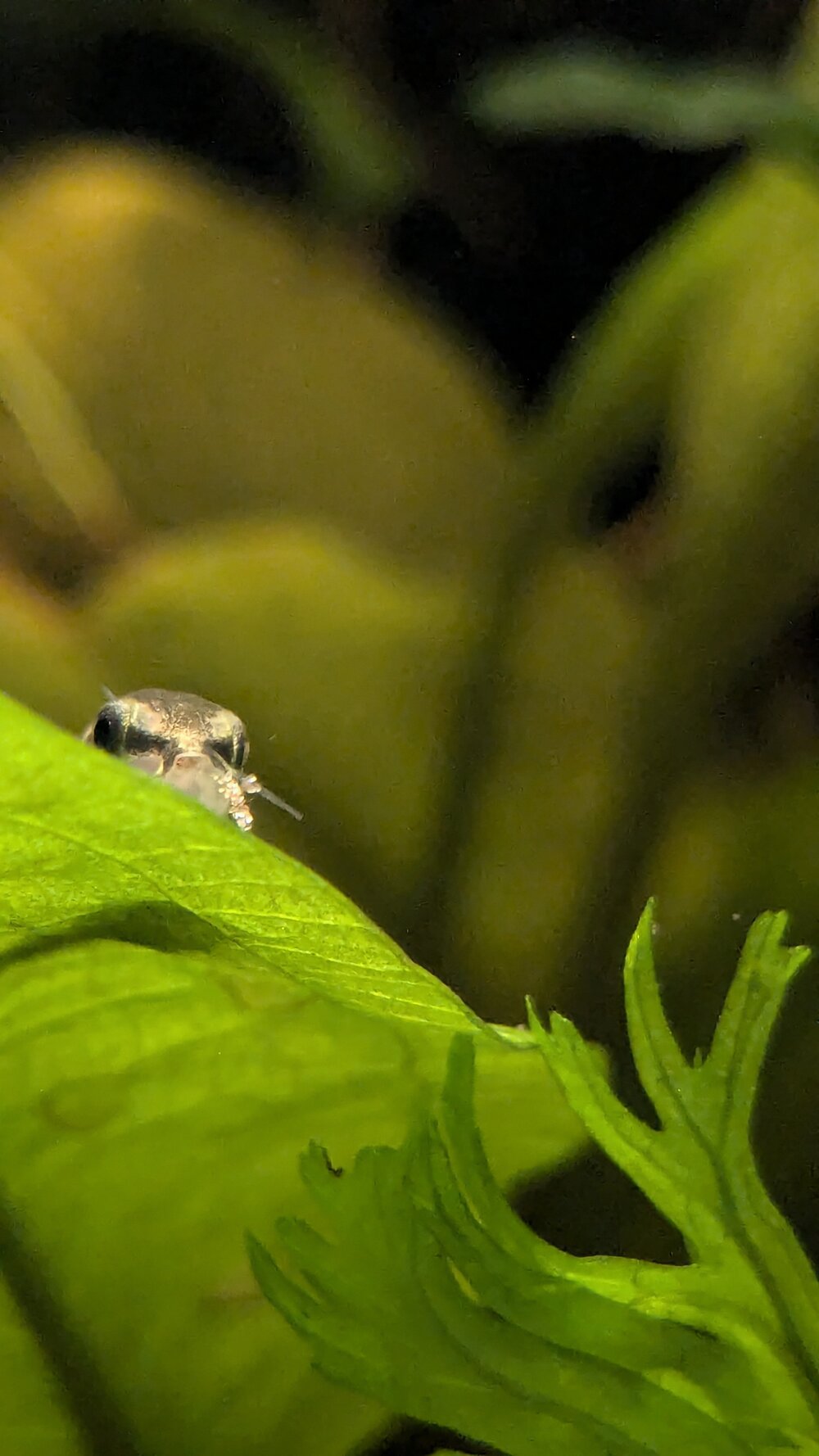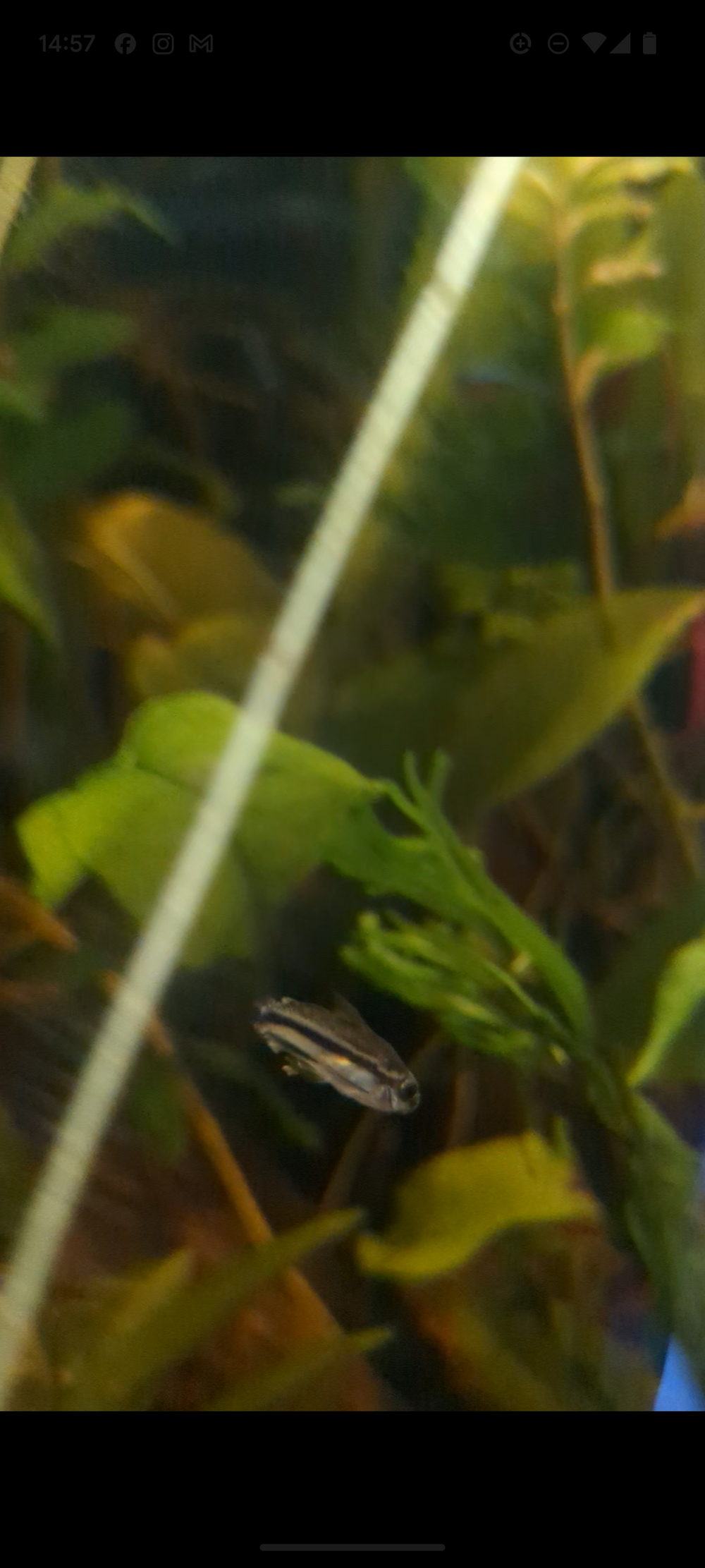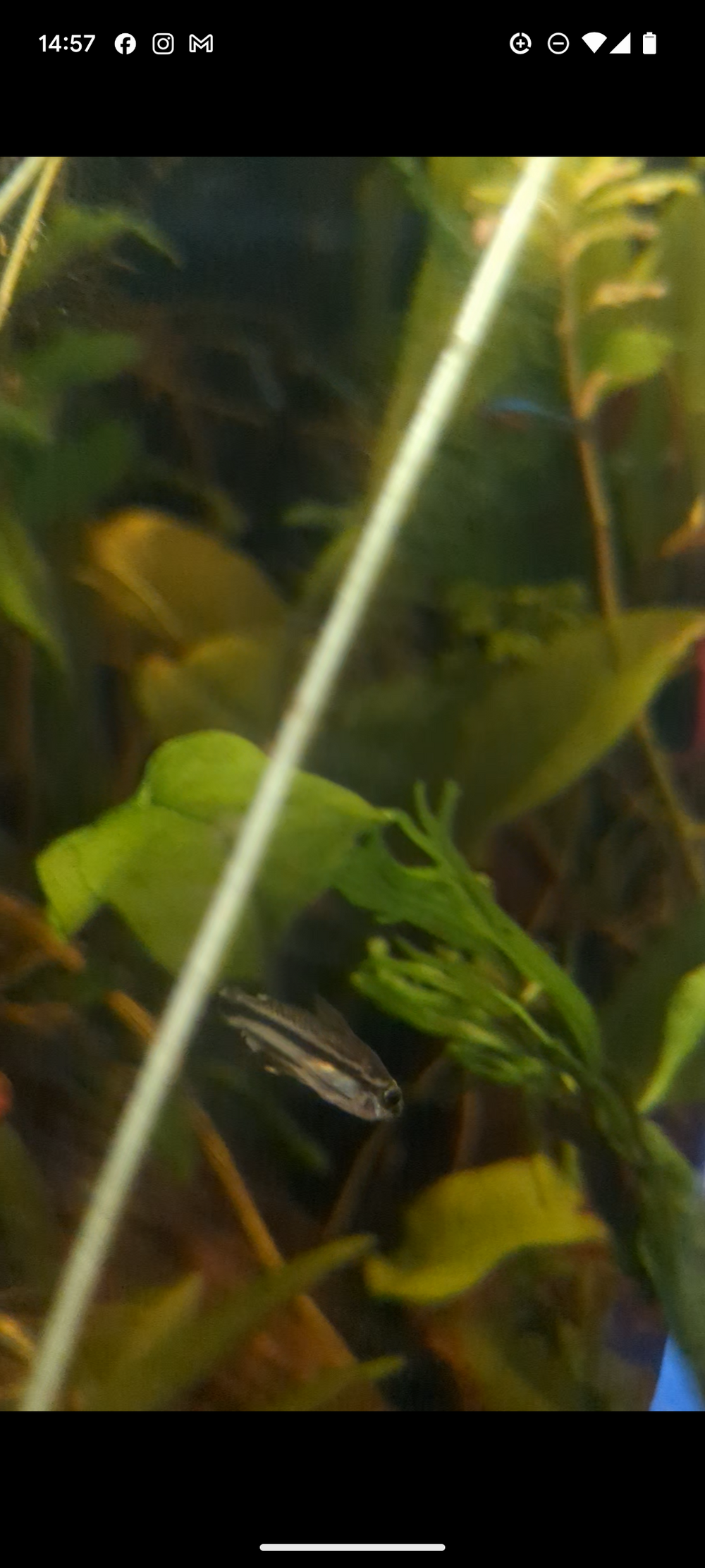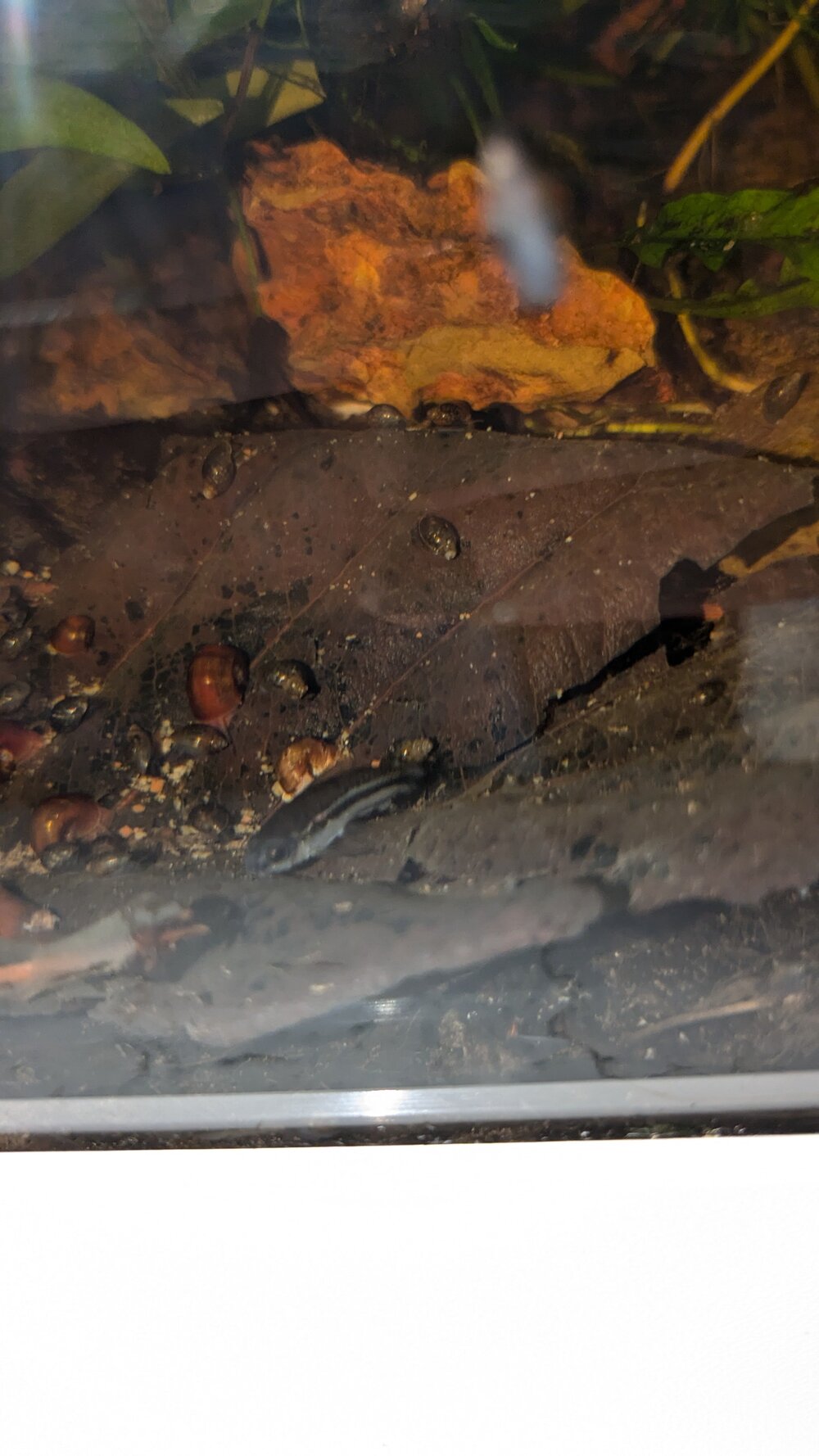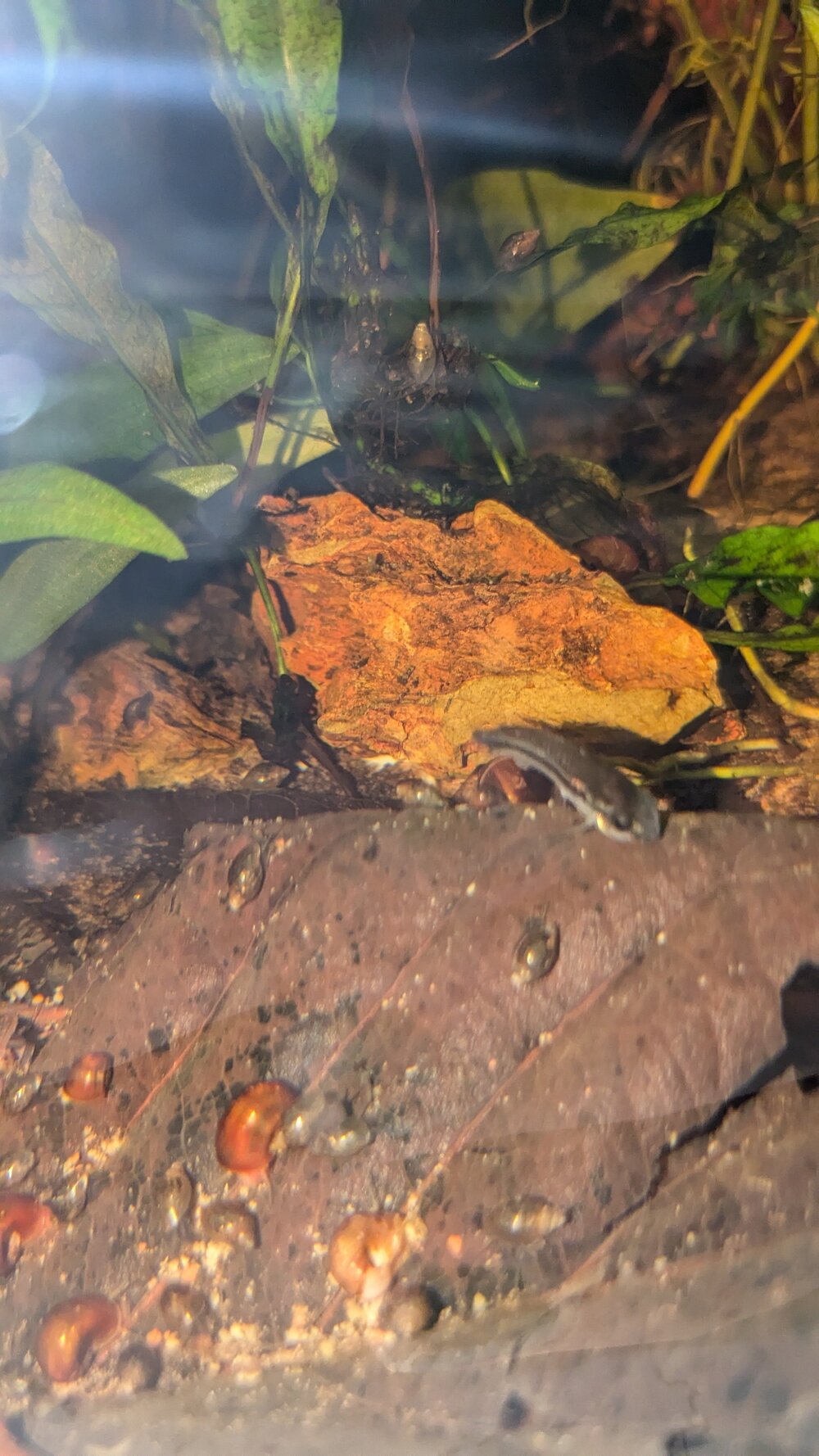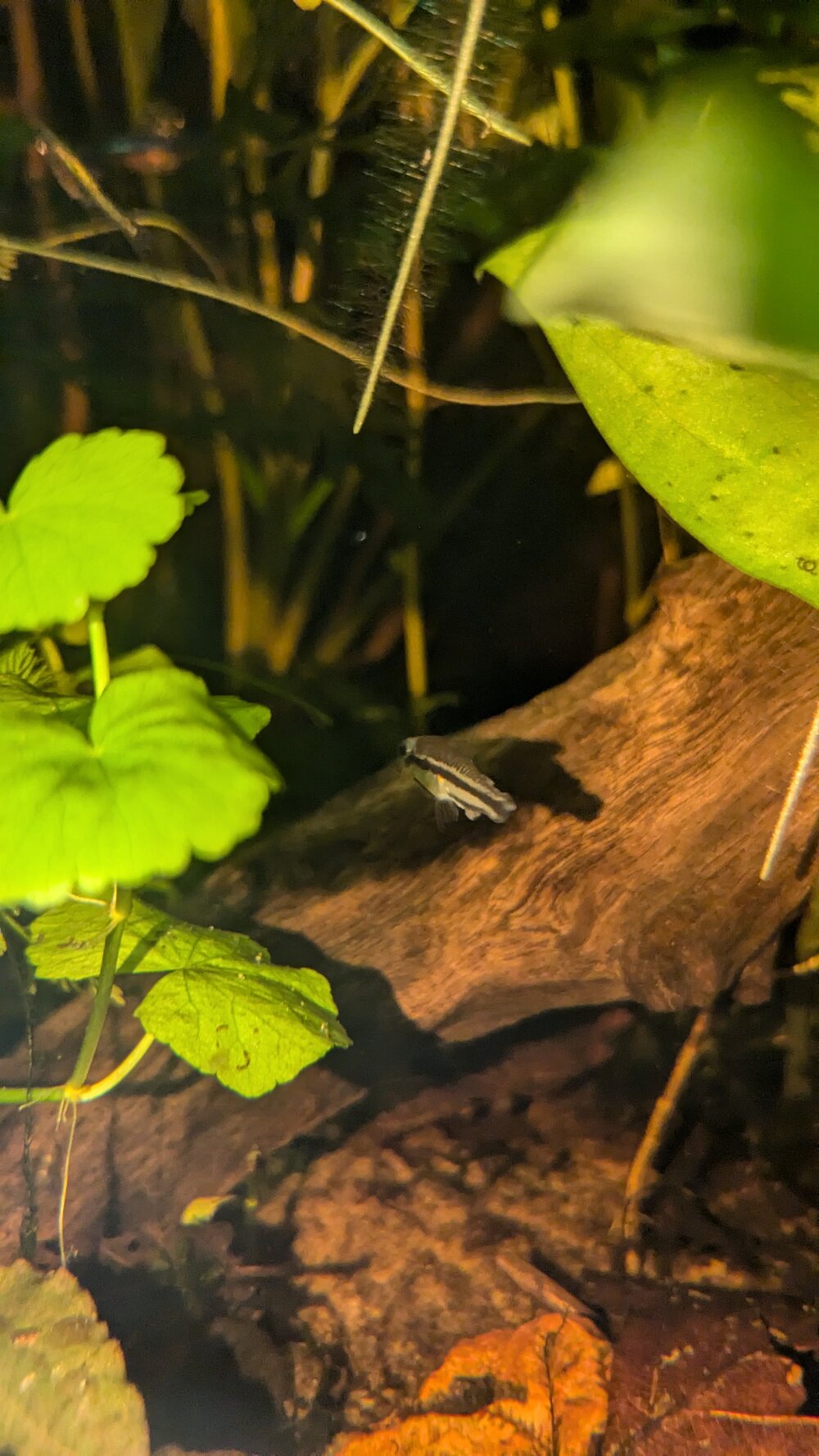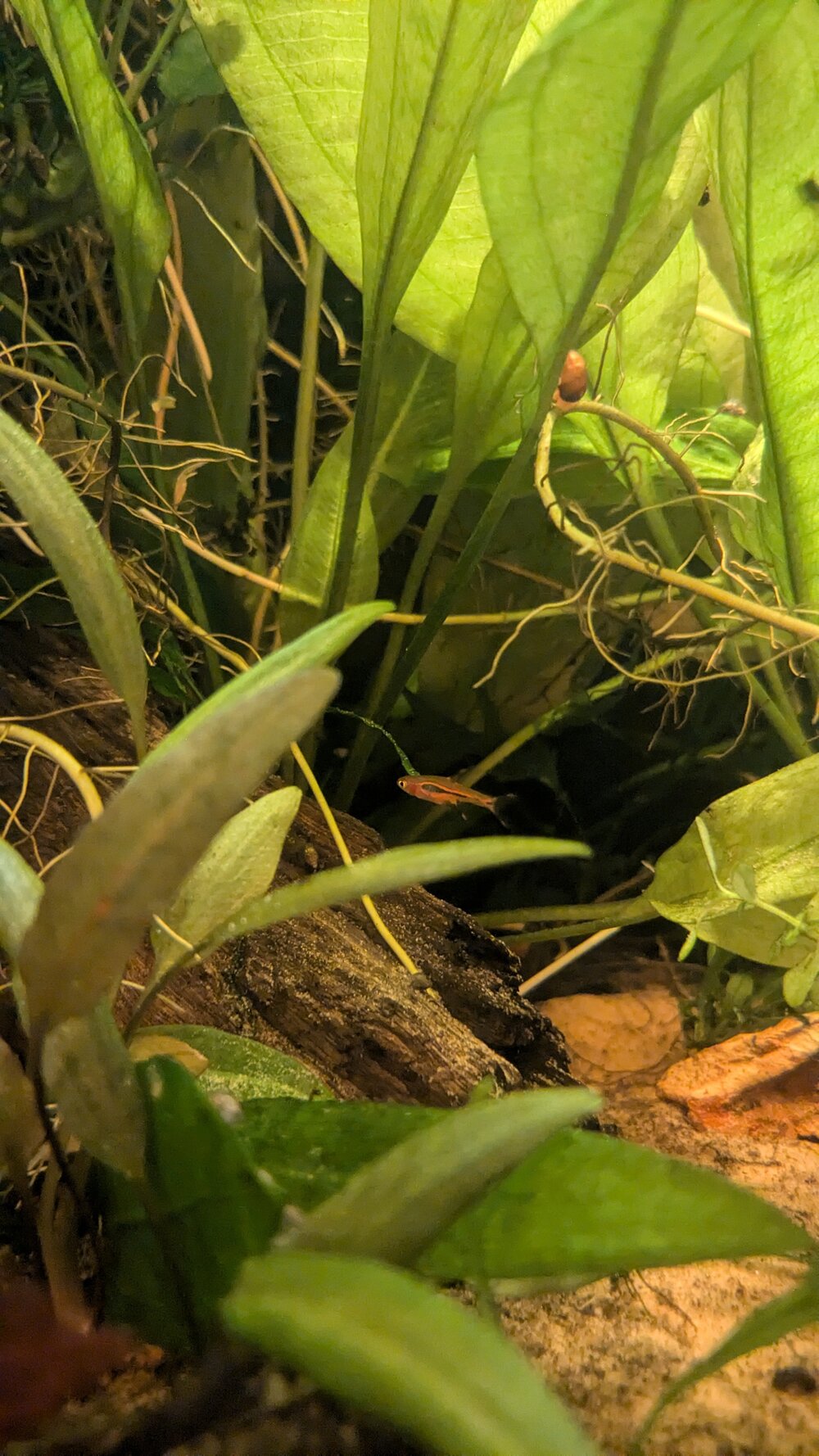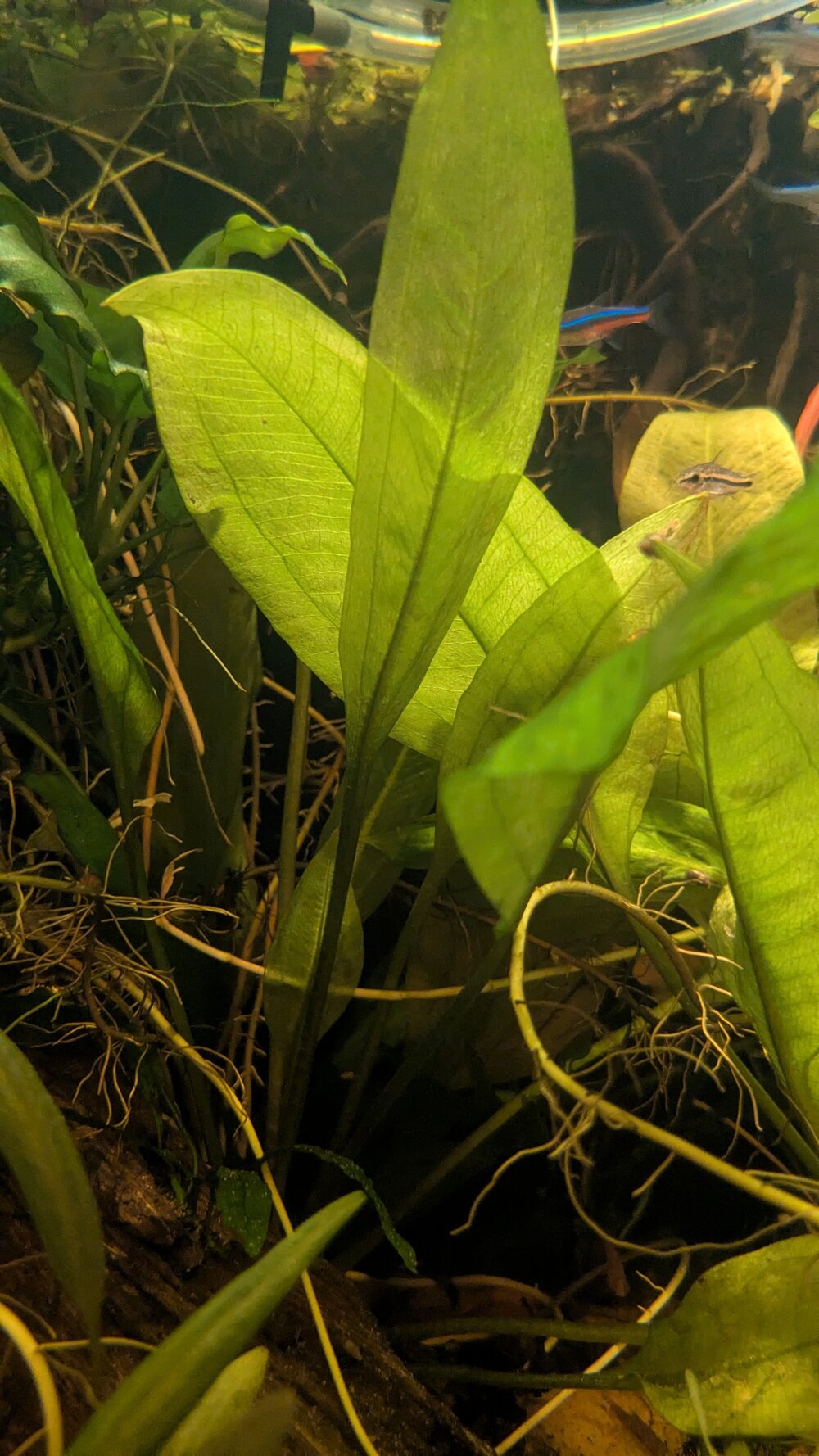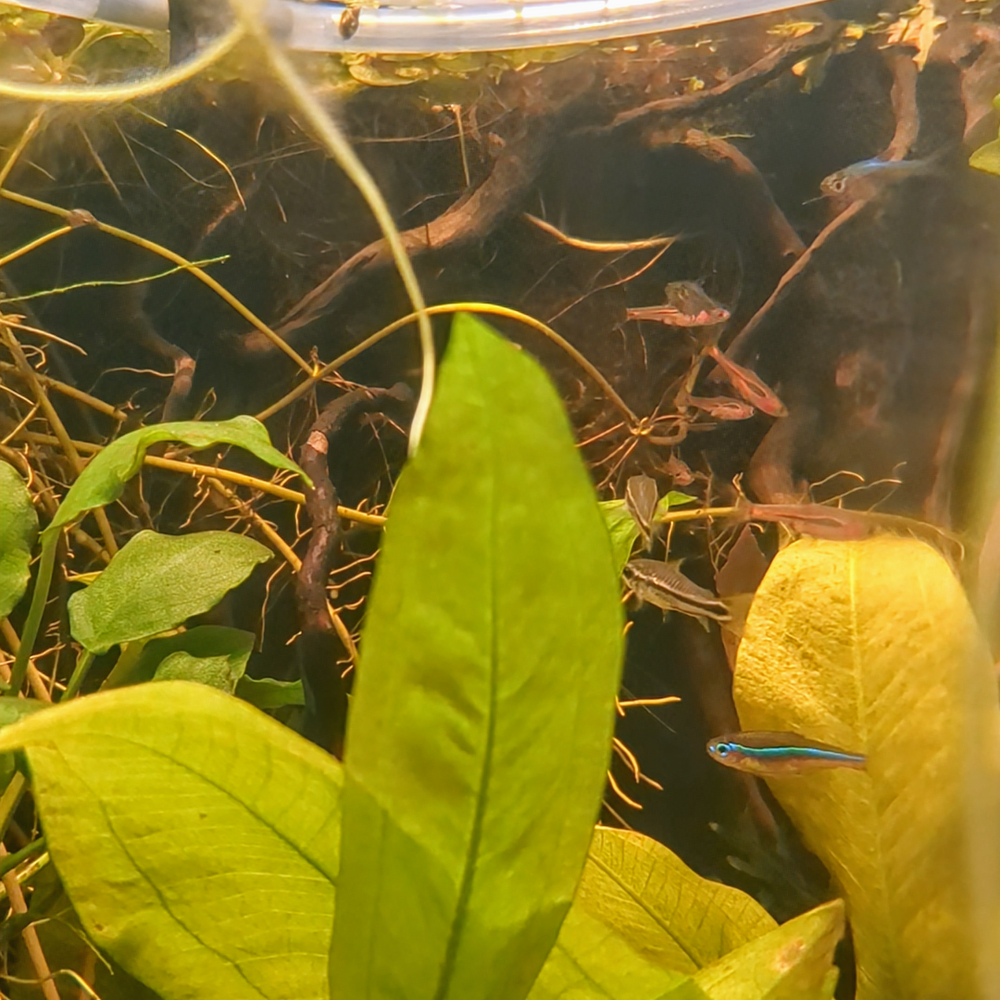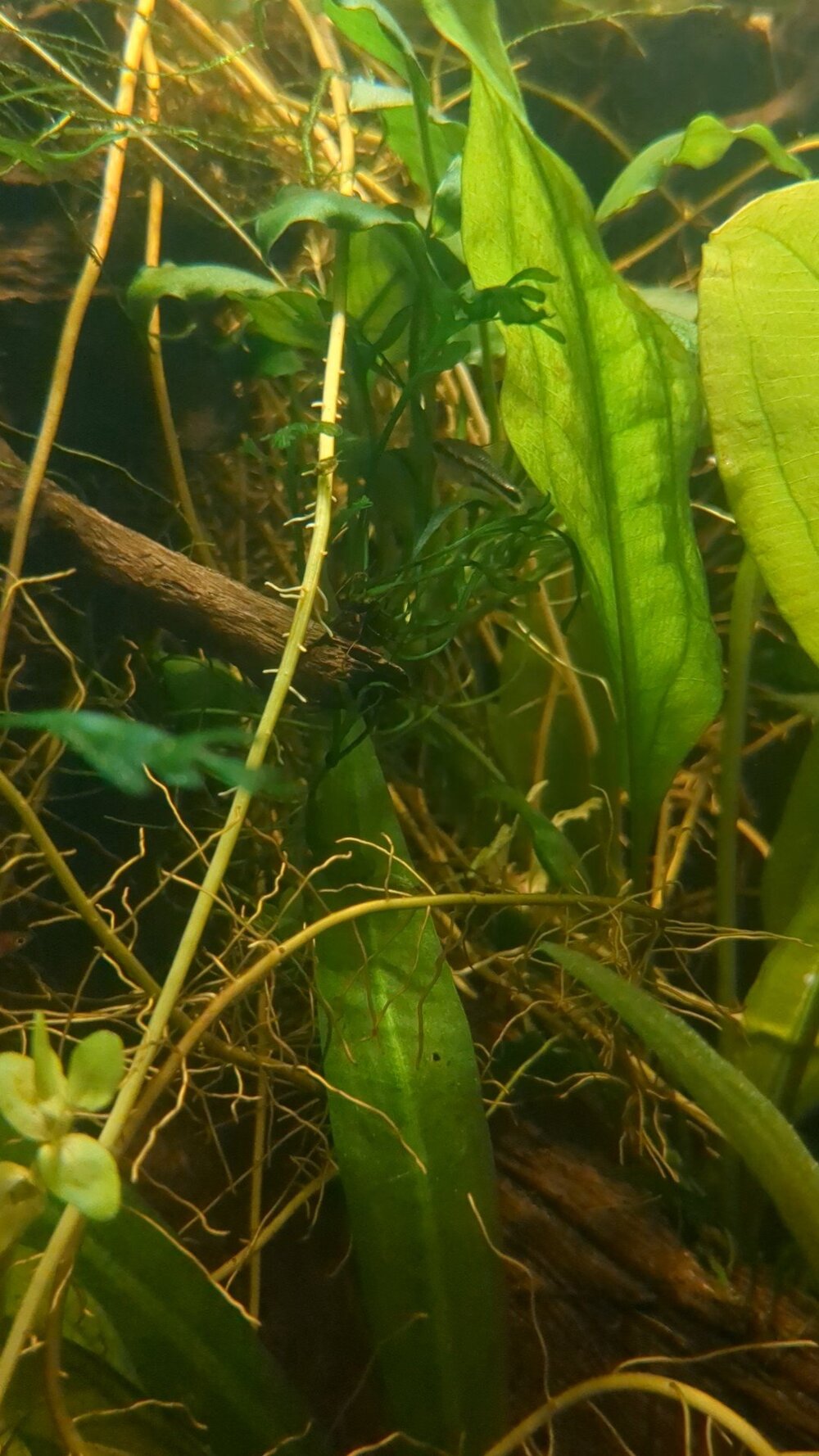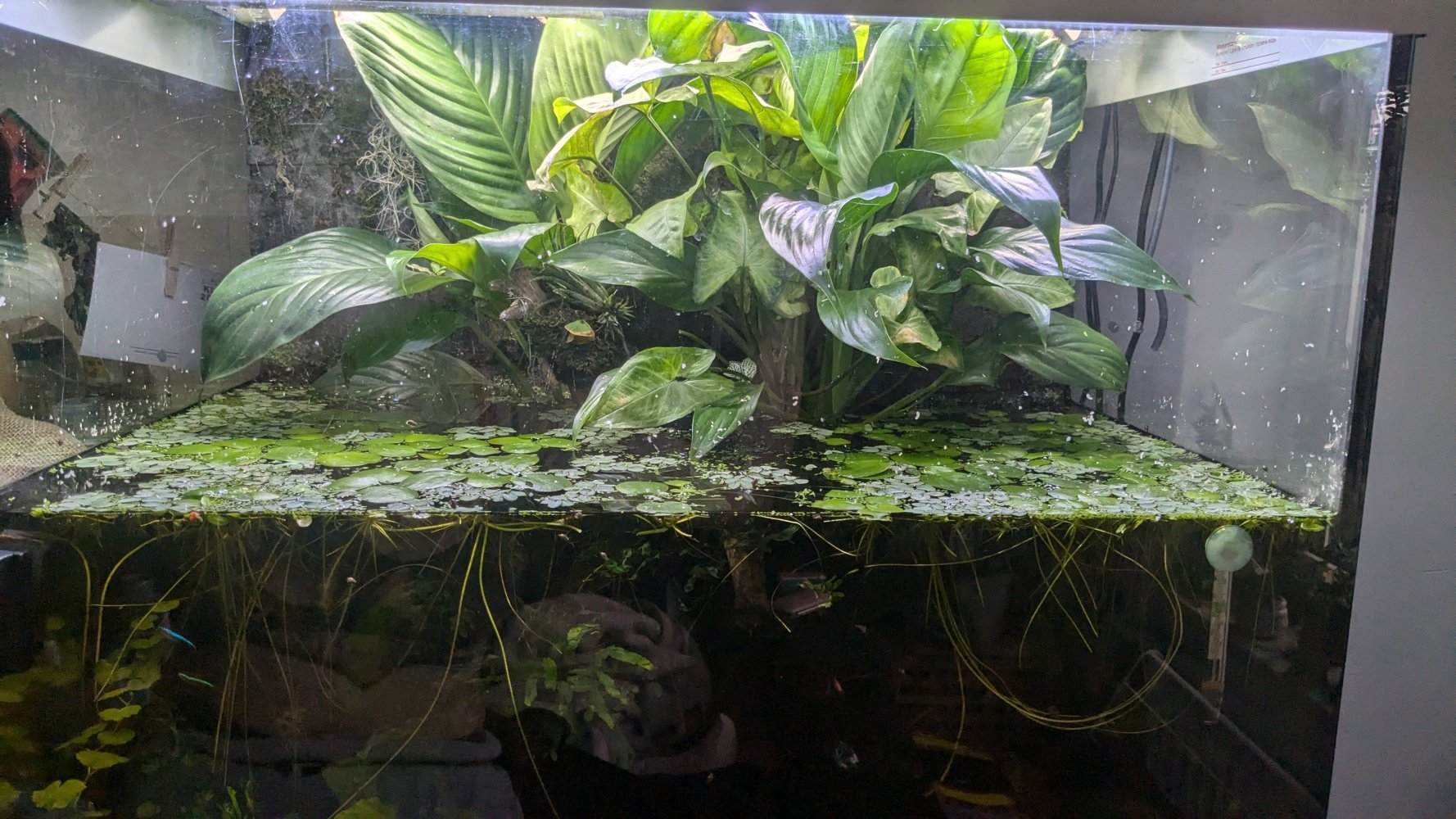A SAD UPDATE
Its day 2 of dosing Esha 2000, but unfortunately I haven't seen the raggedy man in 3 days. I searched the tank today (just looking in with my phone torch) and sadly found his body. I'm pretty sad about this, and definitely don't want to lose any other fish, but I am at a bit of a loss: I did everything that I could think of, and everything that was suggested, for this poor cory
🙁
I've removed his body and will continue to dose with Esha 2000 until the tank is completely clear of any infection. The other corys are looking a hell of a lot less sandy - their slime coats are almost back to tip top condition, and they are cosily shoaling, resting on leaves, eating voraciously and doing all of the Cory things quite happily. Based on what I read on the ESHA website and your help, I'm almost certain the raggedy man had a bacterial/fungal infection, possibly combined with protozoan parasites.
I am seriously hoping this is the last bout of illness I have to deal with for a while!!
My main takeaways from this process have been:
1. QUARANTINE NEW FISH
I know this is obvious, but as a newbie buying from a very reputable LFS, I just assumed everything would be ok when adding new fish to the aquarium. I'm not 100% sure, but
@dw1305 and I ascertained (after he'd seen the tank) that the bout of ick and fin rot a couple months ago were almost certainly the result of adding new fish with quarantining and observing. I'm pretty sure I bought them after they had just come into the shop/just moved out of shop quarantine. What I thought was a marking on some of the corys I now realise was most likely an infection they had in the store. All of the other fish totally recovered with treatment, but the raggedy man never regrew his fins and began declining rapidly again about a week or 2 ago. He was still behaving normally (feeding, going up for air etc), however his visible symptoms were worsening and he unfortunately did pass away in the last couple of days. If I had quarantined the Corys before adding them to the main tank I could have prevented the spread of any illnesses, recognised the health issues of the raggedy man before he got so raggedy and potentially have preemptively treated. My brother is going to return my nano cube, which will become my quarantine tank. In future, all fish and plants will be quarantined before going into the main aquarium, and I'm going to consistently sterilise botanicals in boiling water. I'd rather not risk introducing any illnesses (or more planaria).
2. TANNINS, PLANTS, WATER CHANGES, FILTRATION
More tannins, more plants, more water changes, and improved filtration made a huge difference to recovery speeds before I even medicated. Oak and beech leaves were hugely helpful, as was changing with rainwater whilst medicating. When it comes to blackwater fish, my motto for tannins is now the same as plants:
you can never have enough. Increasing surface agitation by bulking up filtration made a huge difference to water quality, plus the higher flow helped distribute medication. Adding more plants really helped to reduce stress and aggression too: as
@dw1305 rightly says, there's probably no such thing as a peaceful fish, so more hiding places made a massive difference. (It has made me question how anyone with an iwagumi set up manages to avoid all out warfare, but that's a question for a different thread).
3. UKAPS IS POSSIBLY THE BEST RESOURCE EVER
Ukaps has been an invaluable resource in working through this period of illness as a beginner. When I signed up to this, I had absolutely no idea how bloody stressful keeping fish could be! I feel very responsible for these tiny little lives and want to give them the best experience in a tank possible, and I'm hoping I'm getting better at it. I am hugely grateful for all of your advice, support, concern, patience and knowledge. I have still made a predictable amount of mistakes (so far) as a first time fish keeper, however it has definitely been a lot easier and a lot happier/healthier for all involved, thanks to your advice. I have no idea how anyone successfully manages to keep fish without this resource. Essentially: thank you!!
I am sincerely hoping that this is the last sad/illness-related update I will have for some time, and that the tank will chug on quite peacefully from now on (with the additional cautions of quarantining etc). The raggedy man was the only fish still looking visibly ill, so now he's passed, I'm hoping the infection will clear up from here on out. Thank you all again so much for your advice and support! Hopefully it will get better from here.
Ps. I've added in a
little video and some photos I took today post finding the raggedy man. Trying not to get too disheartened - hopefully the rest of the fish are all actually thriving (as they seem to be).



